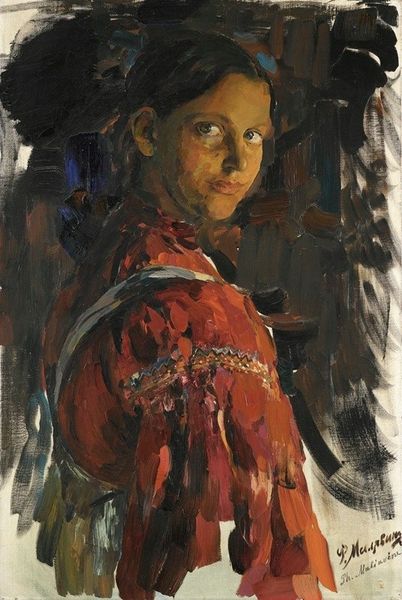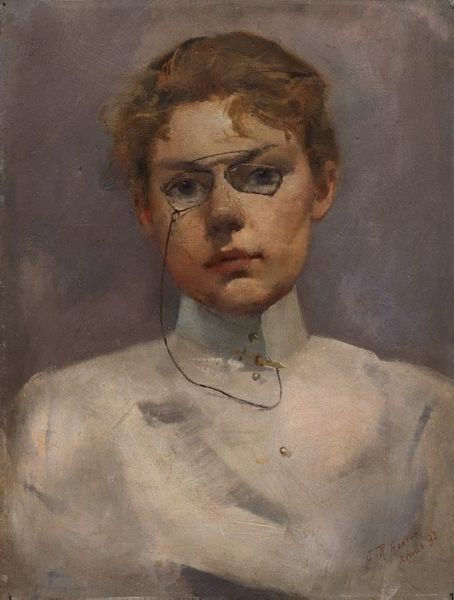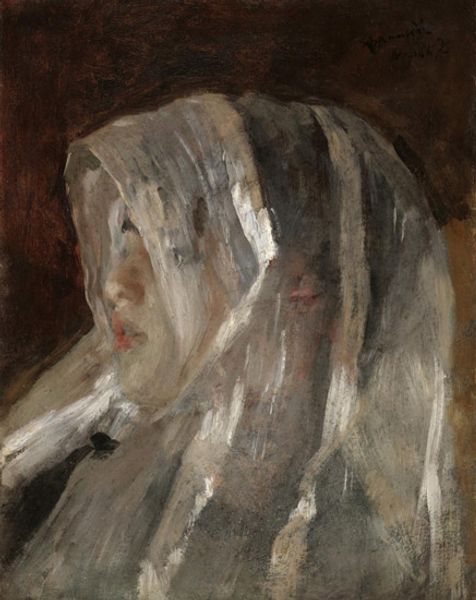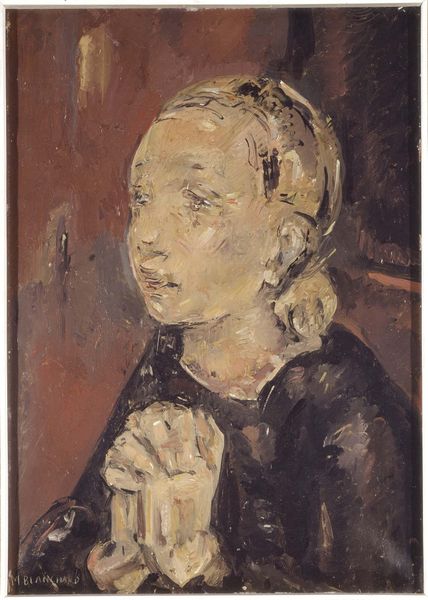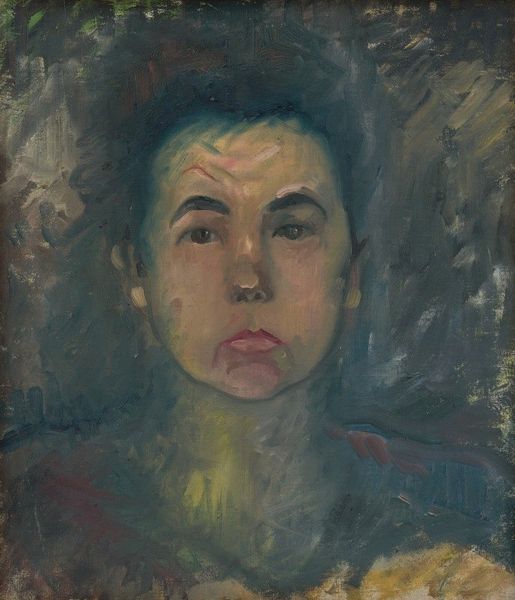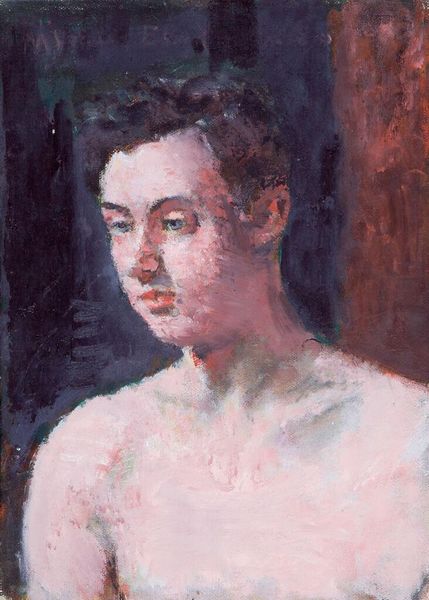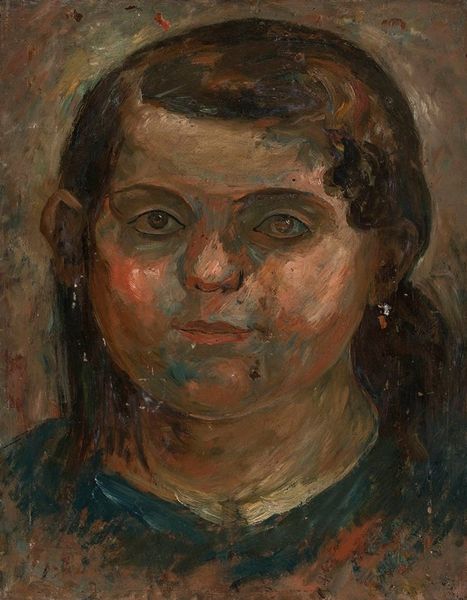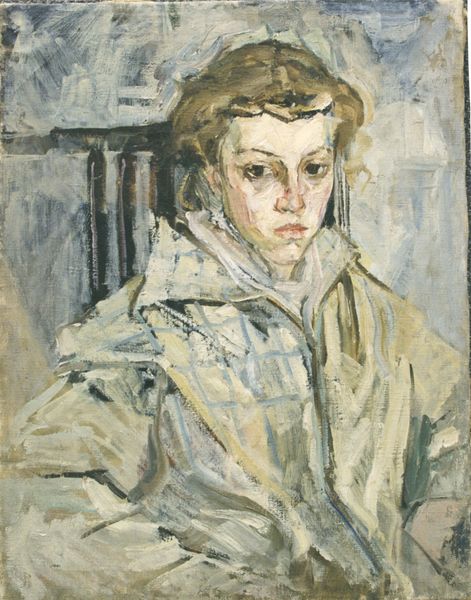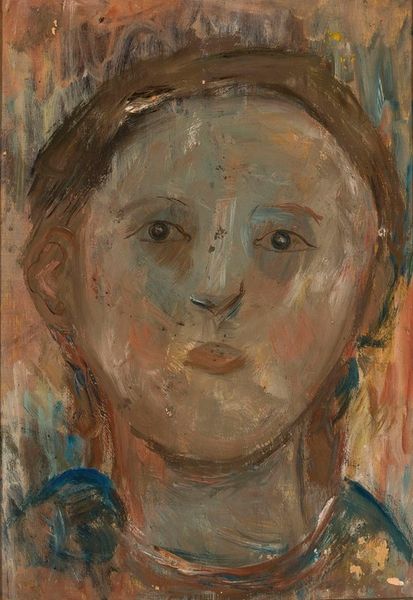
Copyright: Public Domain: Artvee
Curator: Here we have Paul Cézanne's oil on canvas portrait, "Marie Cézanne, the Artist’s Sister," likely completed between 1866 and 1867. Editor: There’s a solemnity to this portrait that's immediately striking. Her direct gaze, coupled with the heavy brushstrokes, evokes a powerful stillness. The stark contrast between her white headscarf and the dark, almost chaotic background amplifies that feeling. Curator: Indeed. Considering the time, one could argue that this isn't merely a portrait, but an exploration of female identity within the confines of 19th-century societal expectations. The headscarf, for instance, could be interpreted as a symbol of both modesty and perhaps a subtle resistance against the male gaze. Editor: It’s interesting you mention that. The headscarf immediately spoke to me of protection and possibly mourning – white can be complex as a color, signifying purity, but also absence. The dark background almost cocoons her. Curator: Precisely. The impasto technique contributes to a sense of rawness, vulnerability, even. Cézanne's deliberate application of paint, almost sculptural in its texture, defies traditional portraiture, demanding a reassessment of power dynamics. Editor: Absolutely. Looking closely, there’s a remarkable duality in the way he renders her features. Notice the shadows around her eyes; they imbue her face with an inner weight, while simultaneously hinting at resilience. She has such light in her gaze that cuts against what I initially felt to be austere. Curator: And it’s worth mentioning the familial context here, the dynamics between Cézanne and his sister must have played a role in its outcome. I also feel it opens an intriguing dialogue on class and the artist's socio-economic position. Editor: It offers much food for thought. Ultimately, this piece transcends simple representation; it is both psychologically penetrating and visually arresting in ways that speak even today. Curator: A vital entry point for considering intersectional dialogues that shape not just the artist's vision, but also the historical conditions within which the piece emerged.
Comments
No comments
Be the first to comment and join the conversation on the ultimate creative platform.
